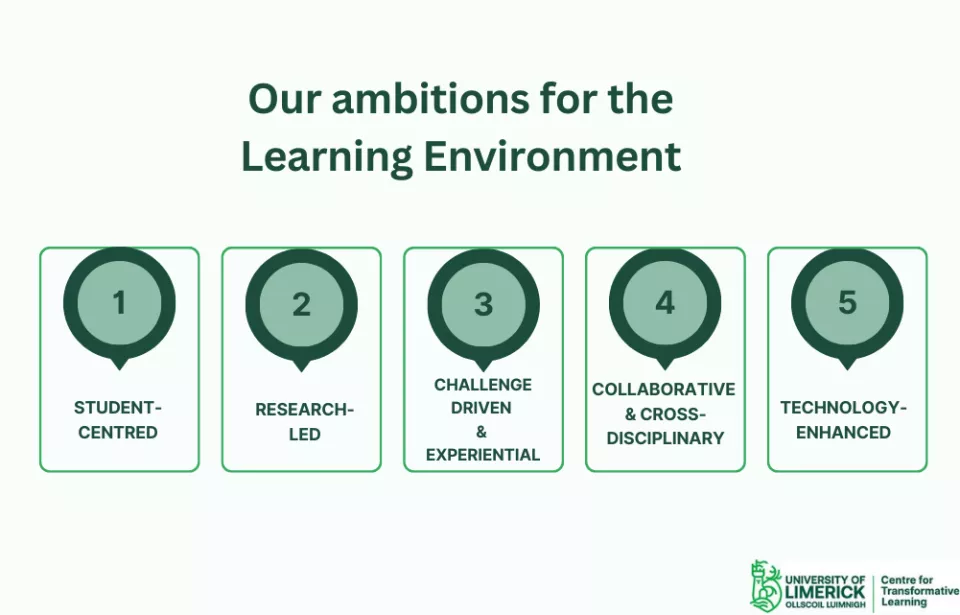We need to design Learning Environments which enable the achievement of our Programme Learning Outcomes
An effective learning environment, wherever it may be located, is likely to be interactive and learner-centred
(Cranfield 2021: 54)
Ambitions
Our students come from wide and varied backgrounds, with a range of prior experiences and learning.
Envision the students who will be in your cohort
Start with how you wish them to look upon completion of their studies
Consider what other demands they may have on their time and attention
Think carefully about where they come from and what previous learning they bring
Bring in one change, using the UDL approach
Scaffold inclusivity by implementing relevant UN SDGs
Encourage a world view where difference is valued, emphasising equitable and ethical treatment of others
The research-teaching nexus suggests we view our students as participants in their learning, not just an audience.
The different points on this nexus include teaching that is:
- Research-tutored
- Research-based
- Research-led
- Research-oriented
This nexus may be enhanced by teaching which:
Emphasises self-directed learning, which leads towards lifelong engagement with research
Contains challenge-driven problems, which allow for independent research
Brings data and findings from staff research into the curriculum and sets tasks for students which require them to use specific research skills
Scaffolds students’ academic literacy so that they become articulate in your discipline.
Authentic learning experiences which require the solving of complex challenges can offer opportunities to our students to construct meaning while working alongside others.
Choose active learning options which engage students
Be flexible by offering meaningful choices to students in terms of how and when they access information
Remember the UDL approach when creating these authentic learning experiences
Emphasise the experiential nature of students working internationally, or collaborating with partners from other countries
Consider capstone experiences for students to bring their learning together in creative ways to explore real-world problems
Develop a global perspective within the UL classroom
Create challenges which necessitate collaboration to be resolved
Create opportunities for cross-disciplinary sharing and exchange.
Encourage students to think critically and work together within and across disciplines
Include authentic learning experiences drawn from real-world examples
Foster an understanding of how students’ knowledge can work with other disciplines to solve complex (or ‘wicked’) problems.
Provide opportunities to apply knowledge to solve real-world problems, in collaboration with others
Emphasise the collaborative nature of co-op placements
In our technology-rich world, our students need to be equipped with lifelong skills to be adaptable and open to learning, to be ready to face, and shape, whatever the future brings.
Build your students’ confidence to articulate themselves across a range of technology-mediated environments
Use digital technologies that are supported by resources within the university
Check for the latest guidance from UL, on Artificial Intelligence and Academic Integrity
Have students interact with Internationalisation at Home (IaH)
See how you can build towards the Graduate Attributes via your Learning Environment.
References
Cranfield, S., (2021). “Teaching in and Managing Learning Environments,” in Pokorny, H., & Warren, D. (eds.). Enhancing teaching practice in higher education. Sage, London.
Please contact us at curriculum.development@ul.ie for further information or to request assistance.
Return to the ICDF page | Return to the Pedagogy and Learning Environment page | Follow CTL on UL Connect
